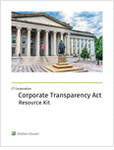In my June column1 I specified some practical tips lawyers might consider regarding trial preparation. For simplicity, that column assumed the perspective of defending a major products liability case. The instant column also offers practical “tips” but the scene shifts forward from the defendant’s trial preparation to actually putting on the product liability defense case itself. Before this trial phase, the plaintiff’s lawyer has presented his evidence. Now it is the product defendant’s turn. Because of space limitations here, we are going to skip details about presenting expert testimony—a copious subject in itself that involves lots of variables and depends on the expertise involved. That topic merits its own discussion. Nevertheless, there are plenty of other practical considerations besides experts that warrant attention.
Presentation of the defendant’s case in the modern products liability trial is the major opportunity to set the record straight and demonstrate to the jury that the plaintiff is not entitled to recover. Until now the defendant’s product has probably been cast in a very poor light. Possibly, it has been referred to as a device, product or instrumentality unfit for use; one capable of unleashing sudden catastrophe upon an unsuspecting user or bystander; a product woefully behind the “state of the art;” one that could have been made safe for a nominal amount of money, etc. Quite possibly, the defendant’s manuals, test reports, advertisements, email correspondence and other records have been shown to the jury, out of context, and with distorted emphasis. Perhaps some jurors have been influenced to the point of tears by sympathy for a catastrophically injured plaintiff.





